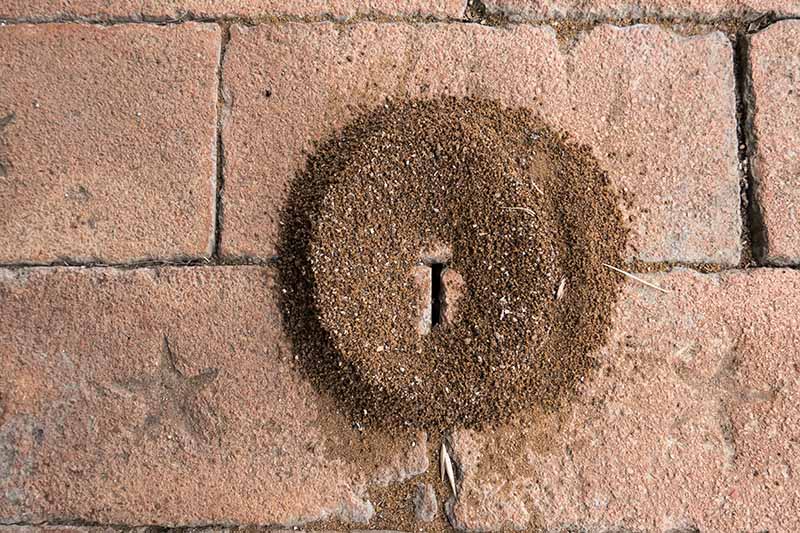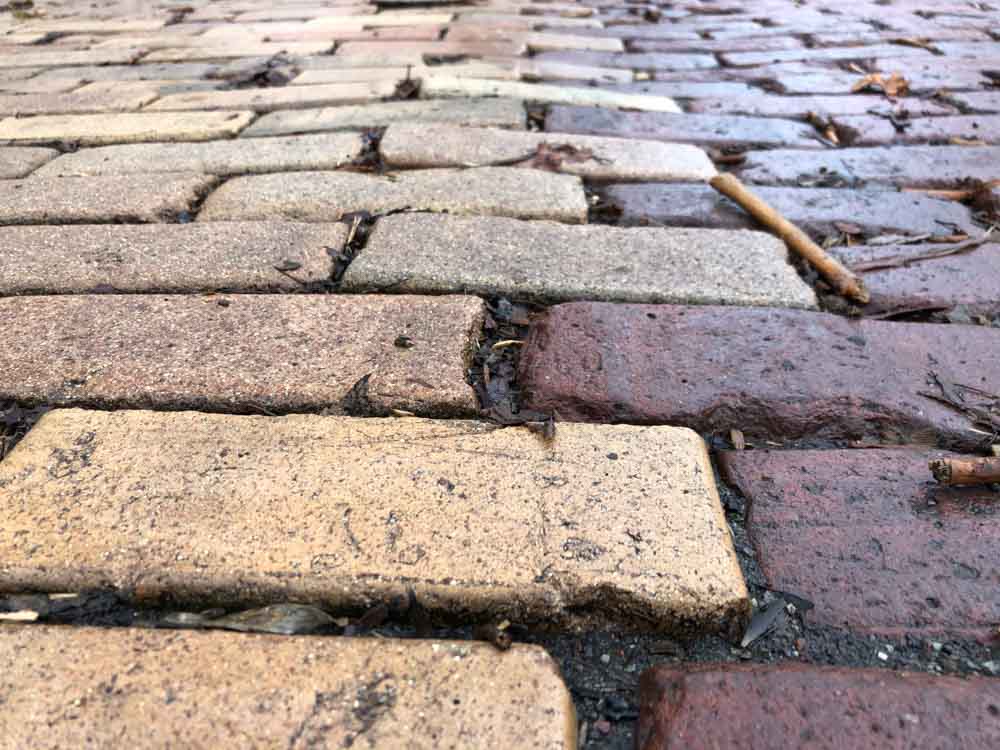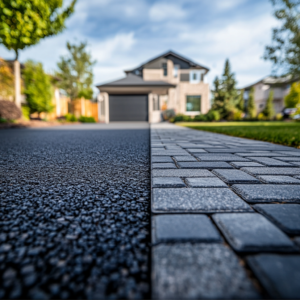Ants are a very old and very well-known enemy of many paver patio owners – they love to make their nest on the dark and humid joint sand between pavers, especially brick ones. To preserve the integrity of your hardscape project over time, it’s pivotal to learn how to get rid of ants on a brick patio and prevent them from ever coming back.
Pavement ants have that name for a reason: they love to nest in the sand between pavers, and they will try to do so regardless of your level of care. In case you didn’t know that already, joint sand is added between pavers at the moment of their installation to form the interlocking system they are so famous for.
Not only that but a coat of sand is added on top of the gravel base before the placement of the pavers; so you can only imagine how much of a paradise that is for ants.
The grout lines between the pavers are dark, humid places, full of sand and biological material decomposing. They are an open invitation for ants to build their nests. While the ants are not a health hazard per se, they can get inside the house and start to build nests in more dangerous places – even contaminating food if you’re not careful enough.
So how can you counteract that perfect environment that a brick patio provides and get rid of those ants? How to get rid of ants on a brick patio and prevent new ones from nesting?
Keep reading this article to find out.
Read also: Cost of driveway pavers in 2024: buying guide

Jump to:
How to get rid of ants on a brick patio: know your enemy
You know what they say: knowing your enemy is the first step to defeat it. So to understand how to get rid of ants on a brick patio, we must first understand them.
Pavement ants are extremely small. Most don’t go past 1/8″. This allows them to walk through every small crack and crevice, which makes them hard to control and combat.
In the US, the West Coast and eastern states have more problems with pavement ants, especially during the summer. But they are a problem all over the country and all over the world.
They can nest almost anywhere, especially around and under rocks, pavers, and trees. The more natural elements you have outside, the more likely it is for them to choose one of them to make their home.
However, their nest can easily be spotted. They usually build it in the form of a small volcano using very tiny grains of sand.
It is not common to see nests inside the house, but they do move inside easily and can reach any food that is not stored in airtight containers.
Getting rid of ants once and for all
There are two main ways how to get rid of ants on a brick patio.
The first one, recommended for outdoors, is using pesticides.
Get the safest pesticide you can, with as few chemicals as possible, in order to not put your health or the health of pets and plants at risk. The application is usually easy enough, simply following the instructions on the label of the products.
They will almost always tell you to spread around the area where you see ants walking back and forth and around their nest if you know where it is. This is the most immediate and recommended course of action to deal with ants’ nests that are directly on your pavers – since it will kill them right away.
Inside the house, however, your best option is to use bait.
There are tons of potions of ant bait to choose from in the market. From granular bait to gel bait. These are very good to prevent ants from reaching food around your house.
They are created using sweet chemicals that attract ants to them. They eat the food, which is actually poison, and go back to the nest. Once in the nest, the effect kicks in and kills not only the ants that are in it but every ant in the colony.
It is extremely effective in the long term, although it needs to be put in the correct spots. Keep food as far away as possible from the baits, and place them in areas where you see ant activity.
Read also: What is the cheapest time of year to pave a driveway?

Is there a way to get rid of ants on a brick patio forever?
Forever is maybe too much – but there’s a way you can get rid of ants on your brick patio for years to come. What you can do is apply a long-lasting insecticide to your pavers. In fact, you can even apply it in the sand under your pavers at the moment of installation.
This alone can prevent ants from nesting on your pavers for years and years on end. But there’s also a second trick you can use to top it all off perfectly: you can mix borax into your polymeric sand before sweeping it between the pavers. The borax is poisonous to the ants and will make it impossible for them to survive between the joints.
And, of course, sealing your paver installation will make it virtually impossible for ants to nest beneath them, as the protective coat formed by the sealer is too hard for them to break through.
Read also: How much does it cost to clean and seal pavers in 2024?

Professional help on how to get rid of ants on a brick patio
In the worst-case scenario, if a lot of time has gone by, the ants can leave the structure of your installation compromised. If that happens, maybe you’ll need to replace the sand beneath your pavers.
In that case, is best to hire professional help to help you with the ant infestation. Professionals from the extermination field can get rid of the ants for you.
As for the installation and replacement of pavers, professionals from the hardscape industry can help you with it. We here at JS Brick are happy to provide that help.
For more than 20 years, we’ve been serving the Sarasota region with the best work in the installation and maintenance of pavers. Get in contact right now through our number +1 941 586 9140 or our email [email protected] for a free consultation!



